Addition to
Aaron Green-designed Residence
Belvedere, California
The third Owner of the property desired to expand upon the existing residence that was originally designed in 1962 by Architect Aaron G. Green, FAIA, a protégé and business associate of Frank Lloyd Wright, as well as my former employer. It is a fairly moderate-sized, two-level wood-framed structure of approximately 2,700 square feet in area.
The Owner was attracted to Belvedere as a community where they could live, raise and school their three children, spend time with their extended family, and entertain their friends. They believed that the further development of the property was suited to these goals and objectives. They were a young, social couple who enjoy arranging dinners and entertainment for friends at their current place of residence. Plus, they appreciated the size of the large lot (.78 acre), its abundant landscaping and protective canopy of trees, as well as the privacy afforded since the house is sited virtually in the middle of the property and well away from the street. The lot is downsloping from Belvedere Avenue at a fairly steep and uniform 50 per cent grade and faces southwest. Despite the neglected condition the house was left in by a previous owner, they both still saw the potential that it could be restored and even appropriately expanded, certainly to a level commensurate with other higher-end properties found in Belvedere.
The Owners were very interested in making this renovation and addition a sustainable project, intending to incorporate many of the energy and resource saving practices recommended by LEED for residences. These systems include, but not limited to, rooftop photovoltaic panels, rain water capture and re-use of grey water, careful selection of energy efficient appliances and sustainable materials. The Owner challenged their architect with a needs and requirements program that was tailored to their lifestyle. They strongly desired a fully integrated scheme of architectural development that would be respectful to, builds directly upon, and complements the qualities and character of the existing residence. They wished to preserve and upgrade the original house, particularly the most significant portions which occur at the Main Floor level. Then they desired to expand and integrate new area that meets the needs of their living requirements, and in this respect virtually doubling the size of the rather modest existing house. This indeed is a challenge to an architect.
The most significant change to the residence occurs below the Main Level. As with the original residence, the bedrooms were all located on the Second Lower Level. The Owner desired the same arrangement, but needed spaces of a more comfortable size and use rather than the minimum standard that existed. They also wanted a Study/Library on this level, as well as full Laundry facilities, a Mud Room, and generous storage. Obviously, all of these space programming requirements could not be accommodated within the original outline of the Floor Plan, and this is where a solution was proposed that would respond to the challenges presented, while remaining respectful to the original architecture. A new wing addition was created that bisects the house perpendicularly at the North end. The North face of the new addition is aligned with that of the existing, preserving the cantilevered deck from the main level above, as well as the projecting bay at the Second Lower Level. The new addition contains a desired Master Bedroom Suite to the West and the more utilitarian spaces to the East. At the very East termination of the addition, a hexagonally shaped Conservatory was created for the purpose of enjoying gardening and the growing of orchids. This structure fits comfortably into an existing bowl-shaped area of the property. The adjacent sloping landscaped would be organized into stepped terracing planter beds for flowering shrubs. The Conservatory, and colorful landscape surrounding, would add attractive visual interest to the front yard approach to the house.
The new East and West addition incorporates architectural design and detailing of the existing original residence. It is intended to be a most seamless addition in all respects. The addition follows the same modular, structural system of post-and-beam with the open volume space similar to that at the Main Level of the existing house. The roof follows the exact same pitch and terminates at either end with the same “swallow tail” split gable as the original. The redwood board-and-batten siding system extends that of the original.
The original residence is partially elevated above the existing sloping grade, fully exposing the vertical and horizontal structure underneath. The Owner desired to capture this Foundation Level and create new useable Third (or Ground) Floor on grade. It would provide them also with the opportunity to create a multi-functional outdoor patio area and enjoy the pleasant nature of the property in ways never before.
The Owner desired to extend a broad patio outward westerly from the house. This would allow for free flow of movement between the house and this new outdoor space. The patio is arranged along levels that step down with the slope and contains elements that are in keeping with the Owner’s lifestyle—areas that allow outdoor dining and entertainment, outdoor kitchen/BBQ area, a recessed corner for pleasant, relaxed conversation, and a water feature with integrated lap pool and spa tub. The patio is created from excavations under and around the house, as required by the new Third Lower Level at grade. A retaining wall system is created along the West side of the patio; the earth from the excavation fills within. In this space to be filled under the patio, whose grade varies due to the sloping site, the Owner intended to place a large tank/reservoir that will be used to capture water from the property and store the water for re-use in landscape irrigation.
The addition that projects perpendicularly West from the original house serves to frame the patio as a court. The addition contains spaces on this new ground level as required by the Owner’s program—a small Exercise Room, a Cabana for use by the guests, and a Home Office. At ground level, the addition does not connect to the original house but is pulled away to create a “breezeway” passage between outdoor areas on the South and North sides of the house. The outdoor area at the North is intended to be serve primarily as a pleasant children’s play area. It would be partially sunken in order to relate directly with the finish floor level of the new Third Lower Level, as there is a children’s play room in this North portion of the residence, allowing the ease of movement between indoor and outdoor activities. The Pergola extending westward from the elevator terminates to one side with an exterior stair connection back up to the Second Lower Level.
The large lot allowed for the creation of a separate Guest Cottage. The ideal location is an unused portion of the property directly adjacent to the driveway and parking court. As designed, the Guest Cottage is attached to the North end of the parking court, directly opposite the existing carport, providing ease of access and a quiet, private setting for the guests. A vertical structure was created to work with the steep downslope of the site. The lower level of the Guest Cottage is still higher than the roof of the existing house. Interior spaces of the Cottage, and its exterior balcony, have been arranged and oriented to the view to the southwest over the existing house. The design and materials of the architecture are intended to reflect and complement that of the original residence.
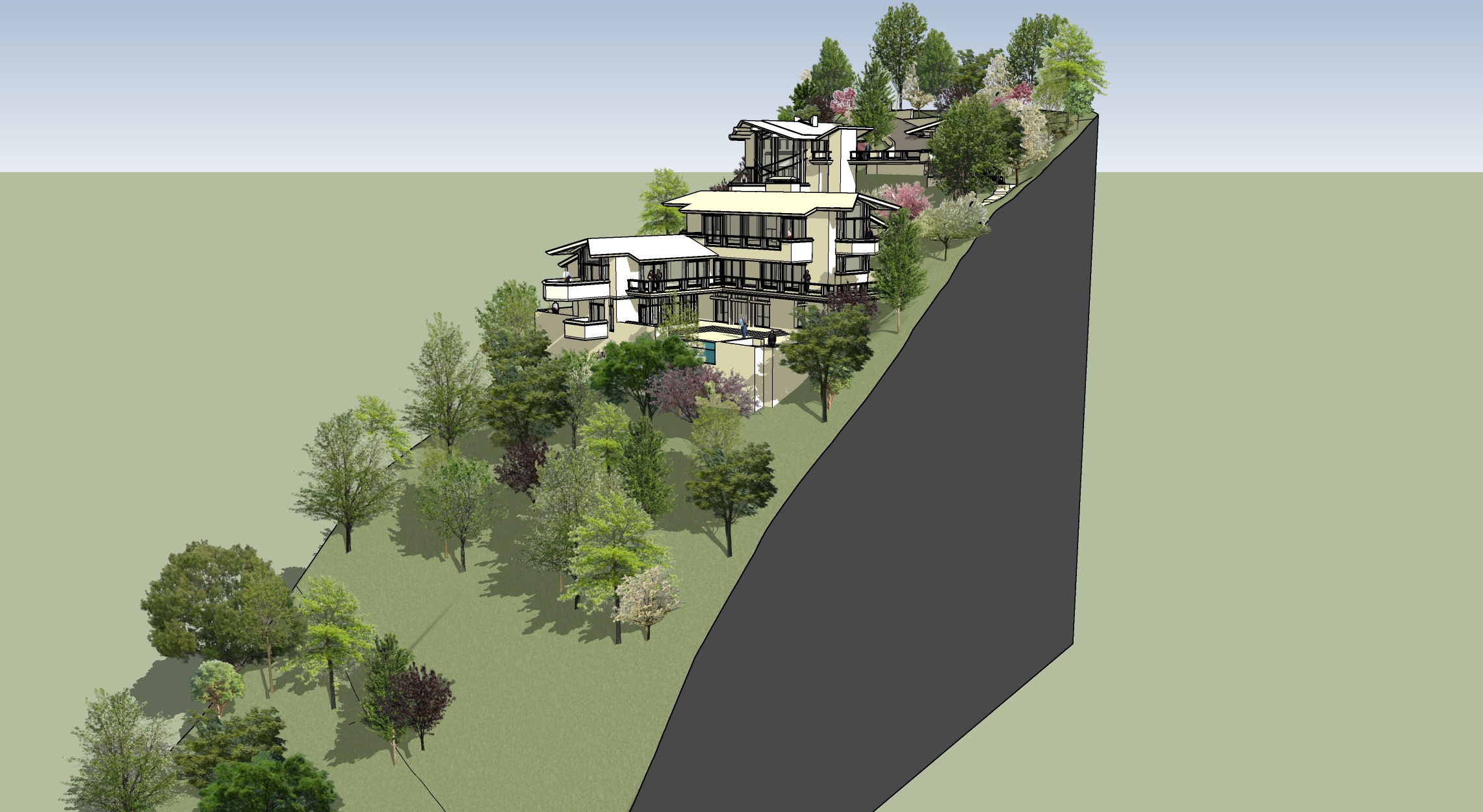
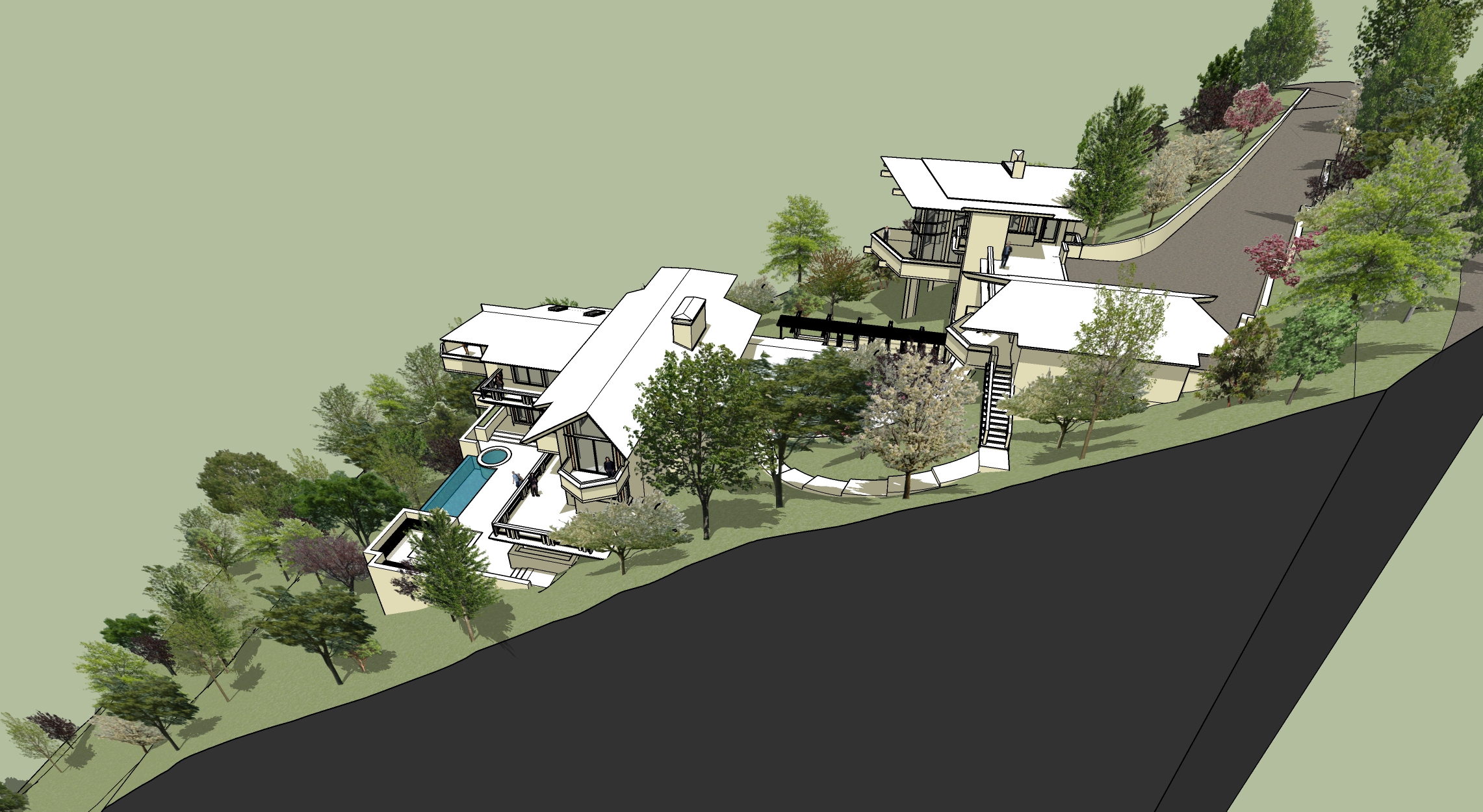
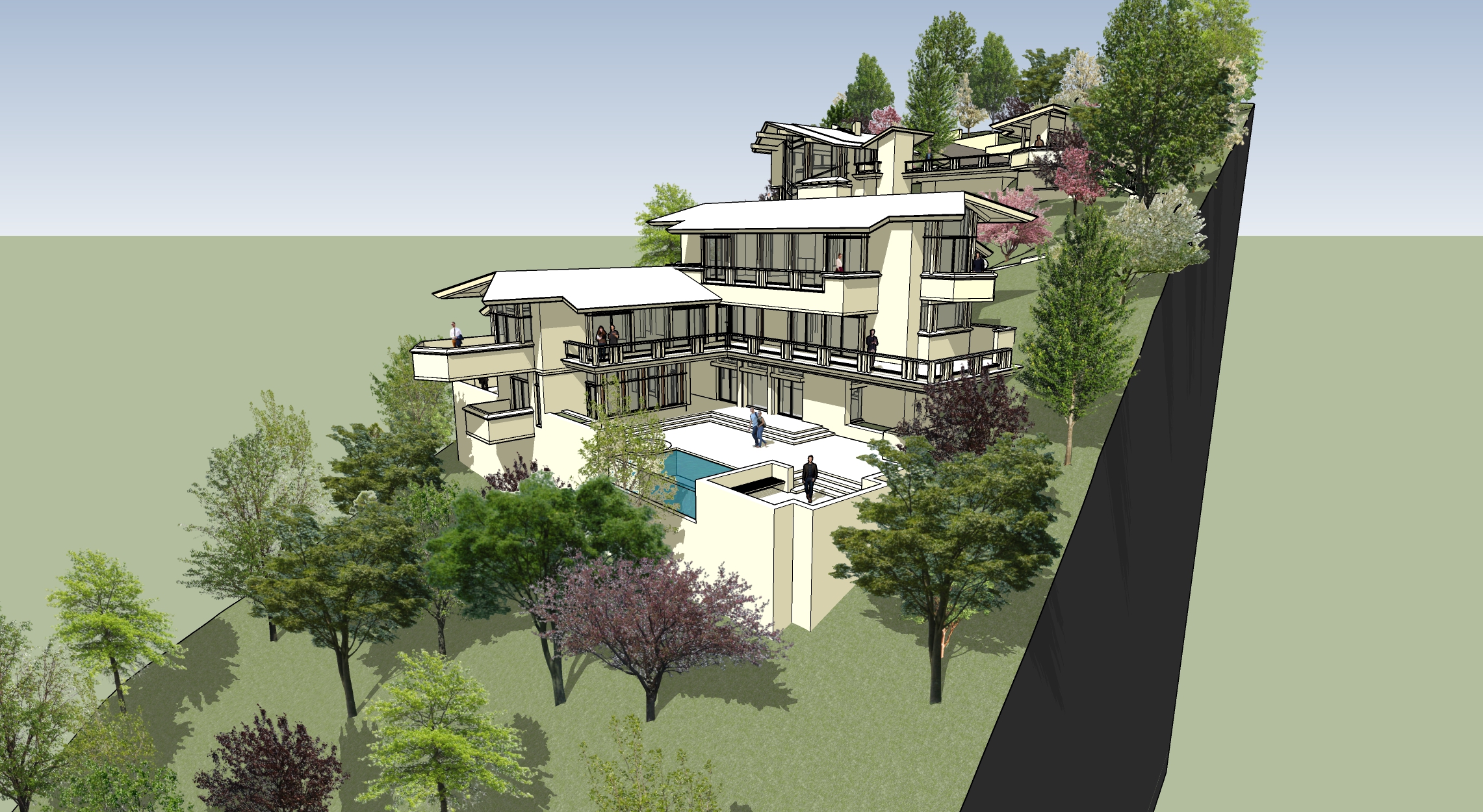
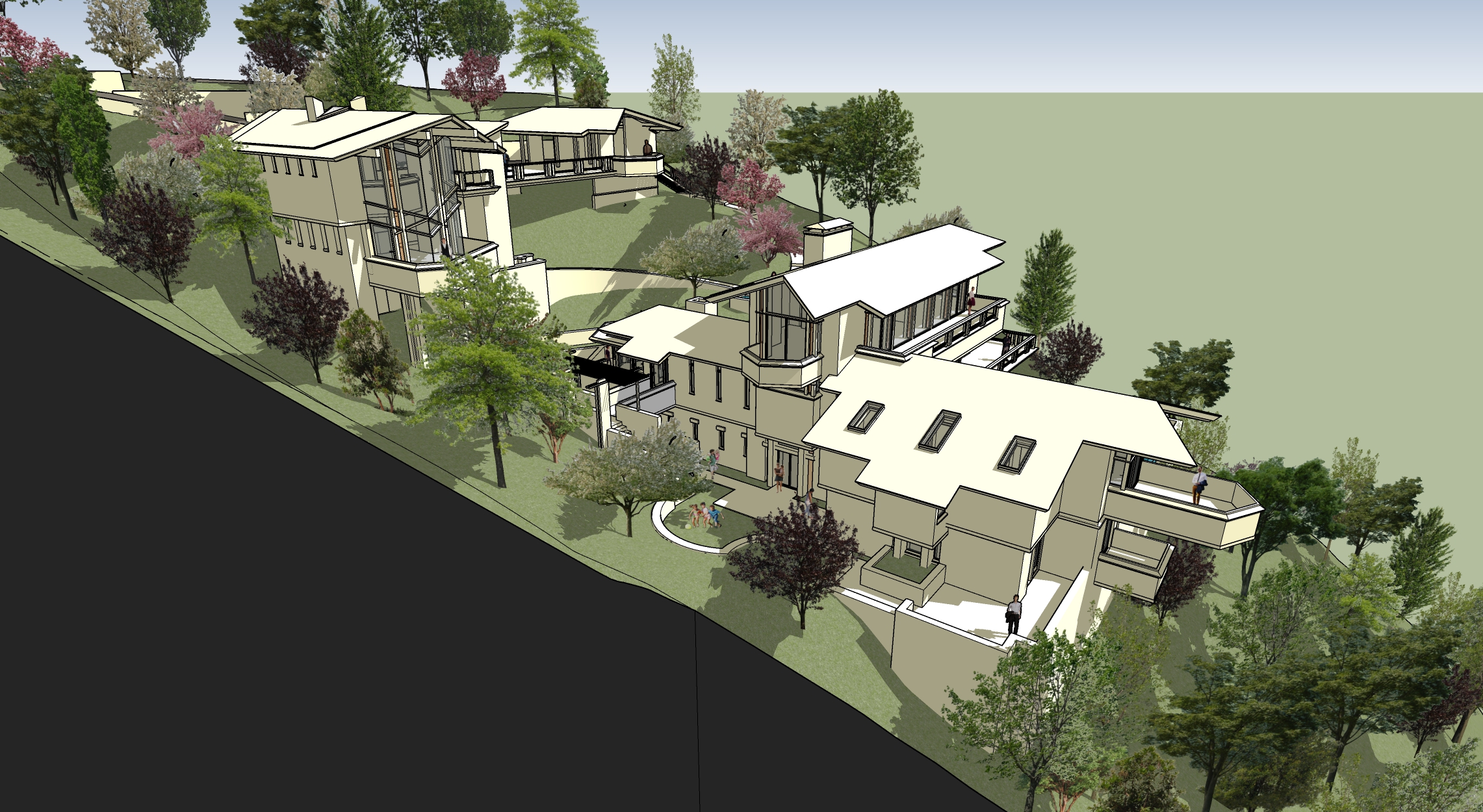
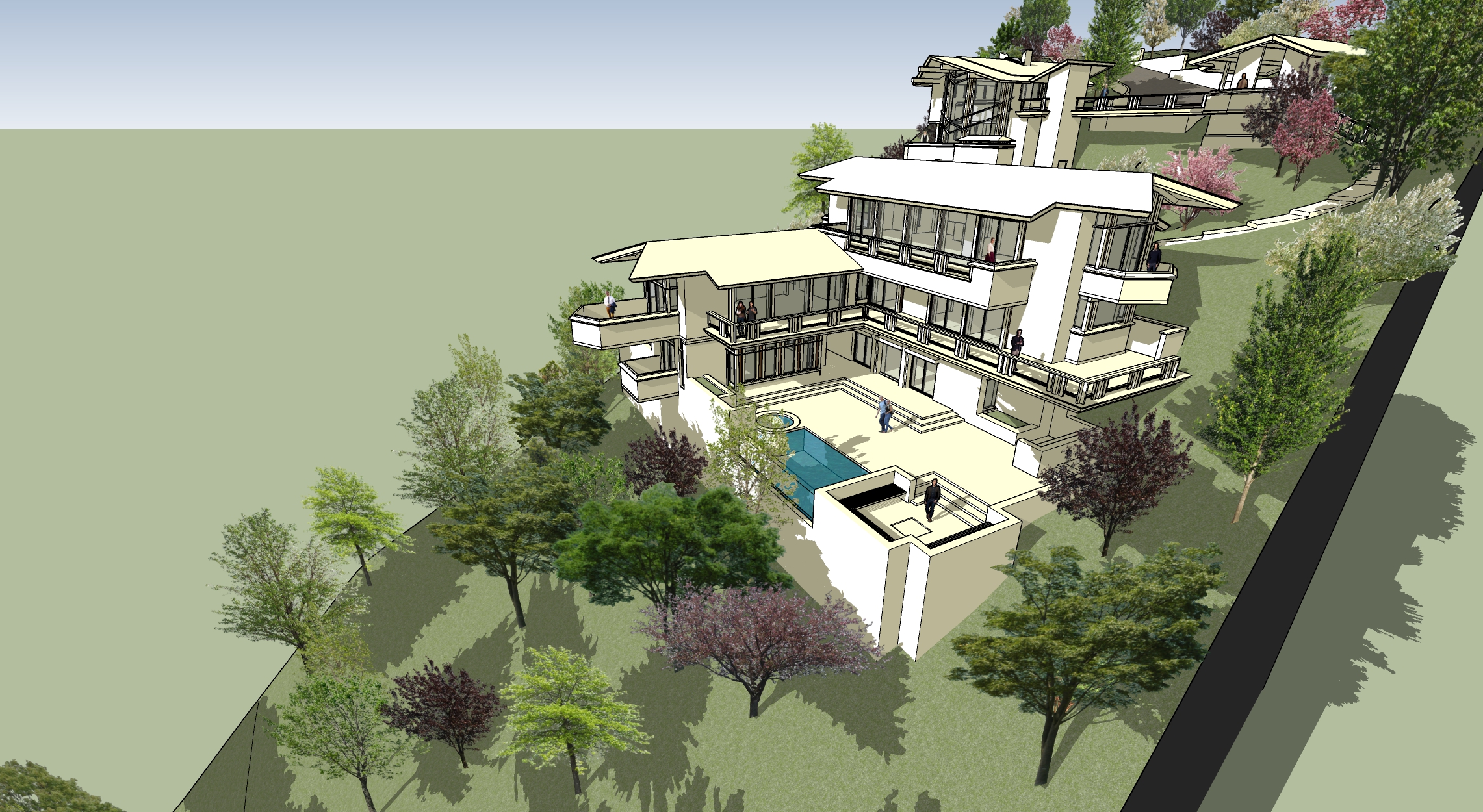
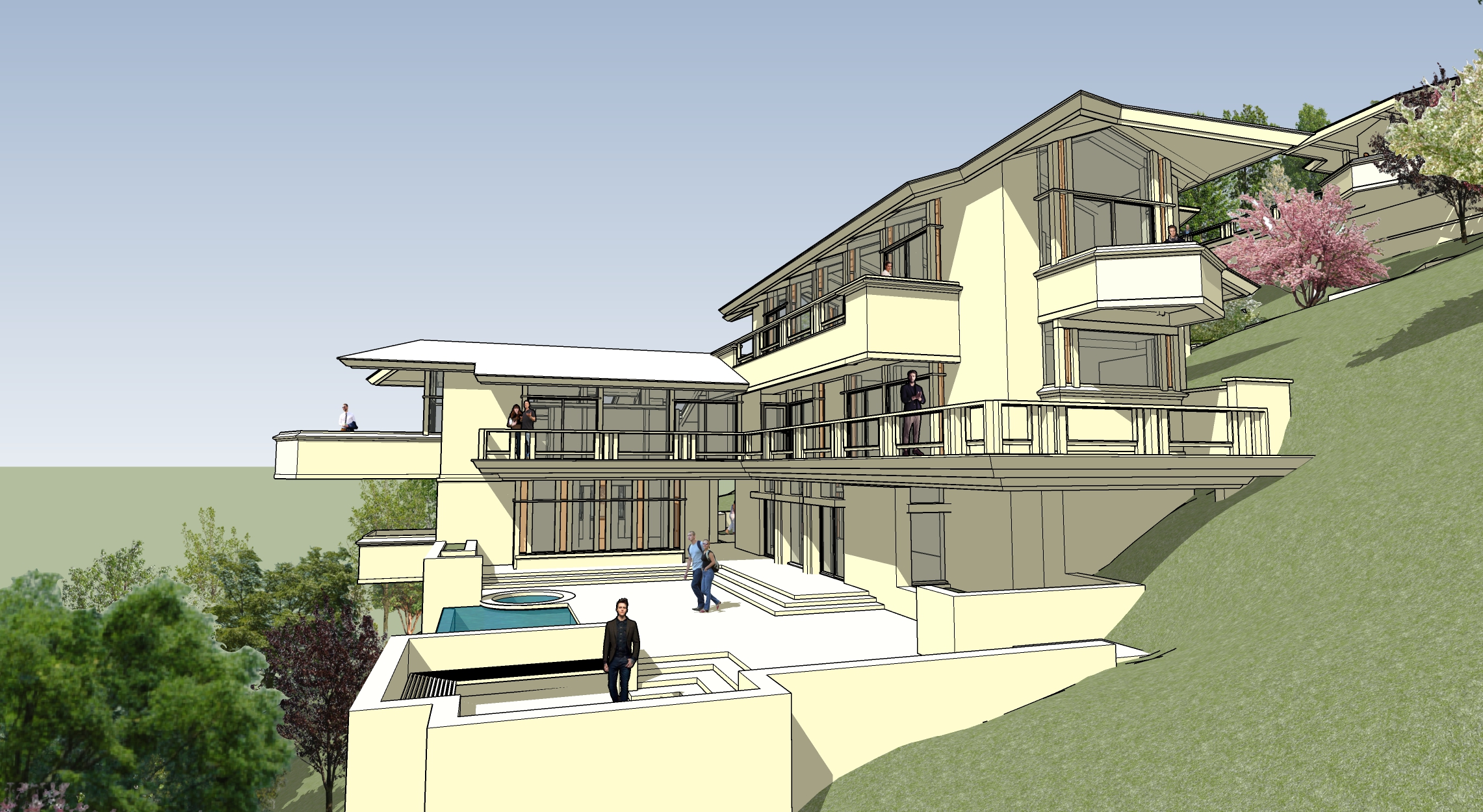
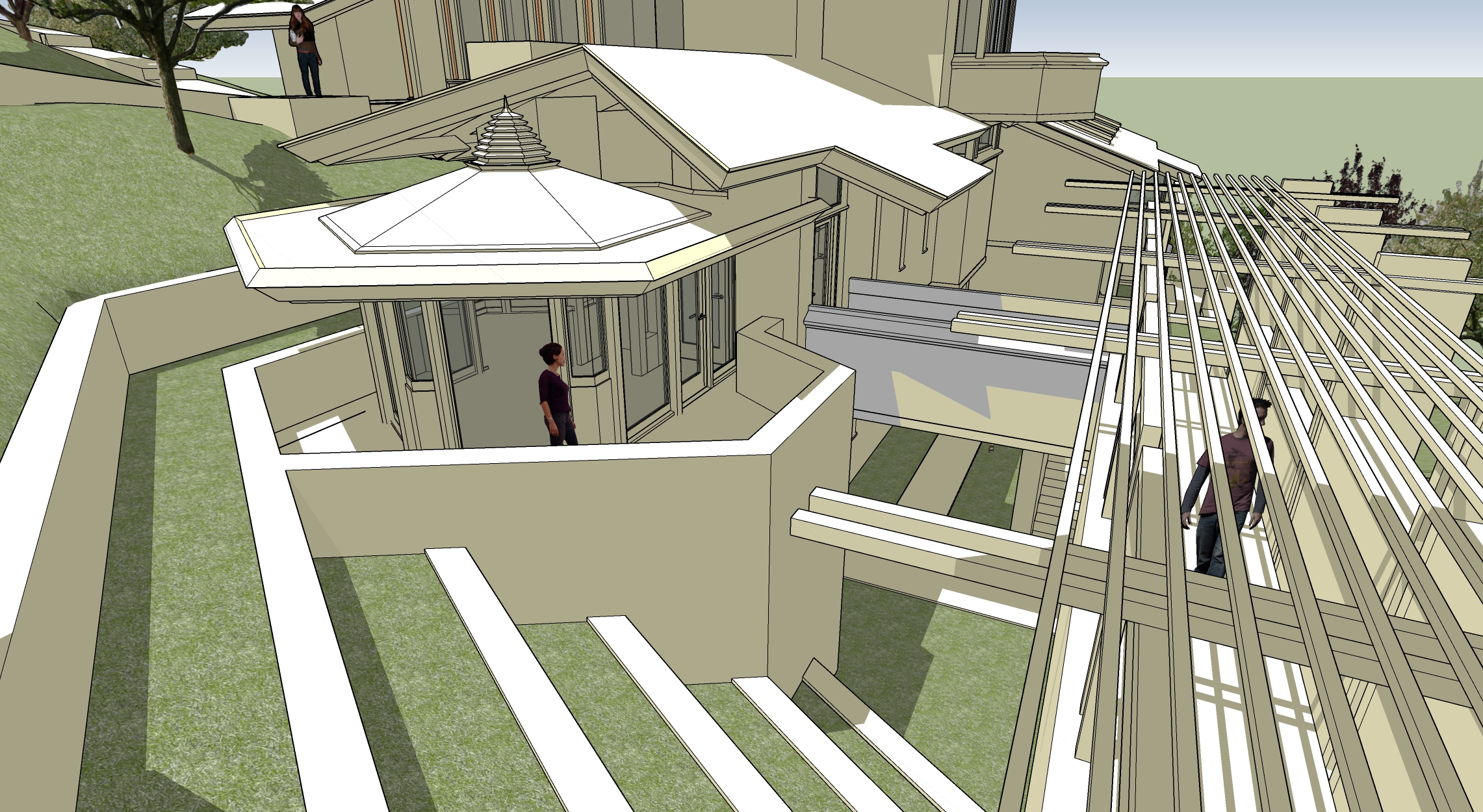
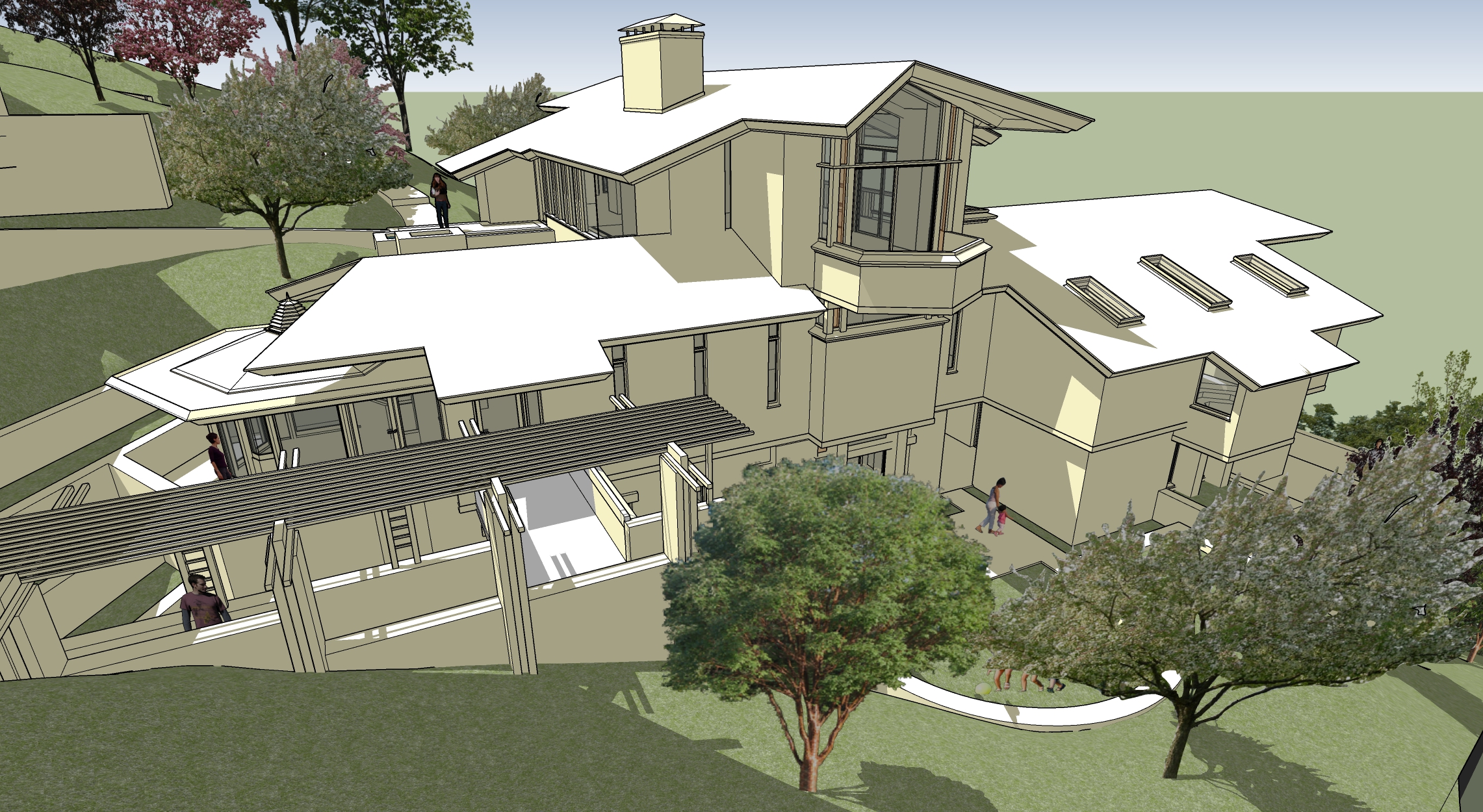
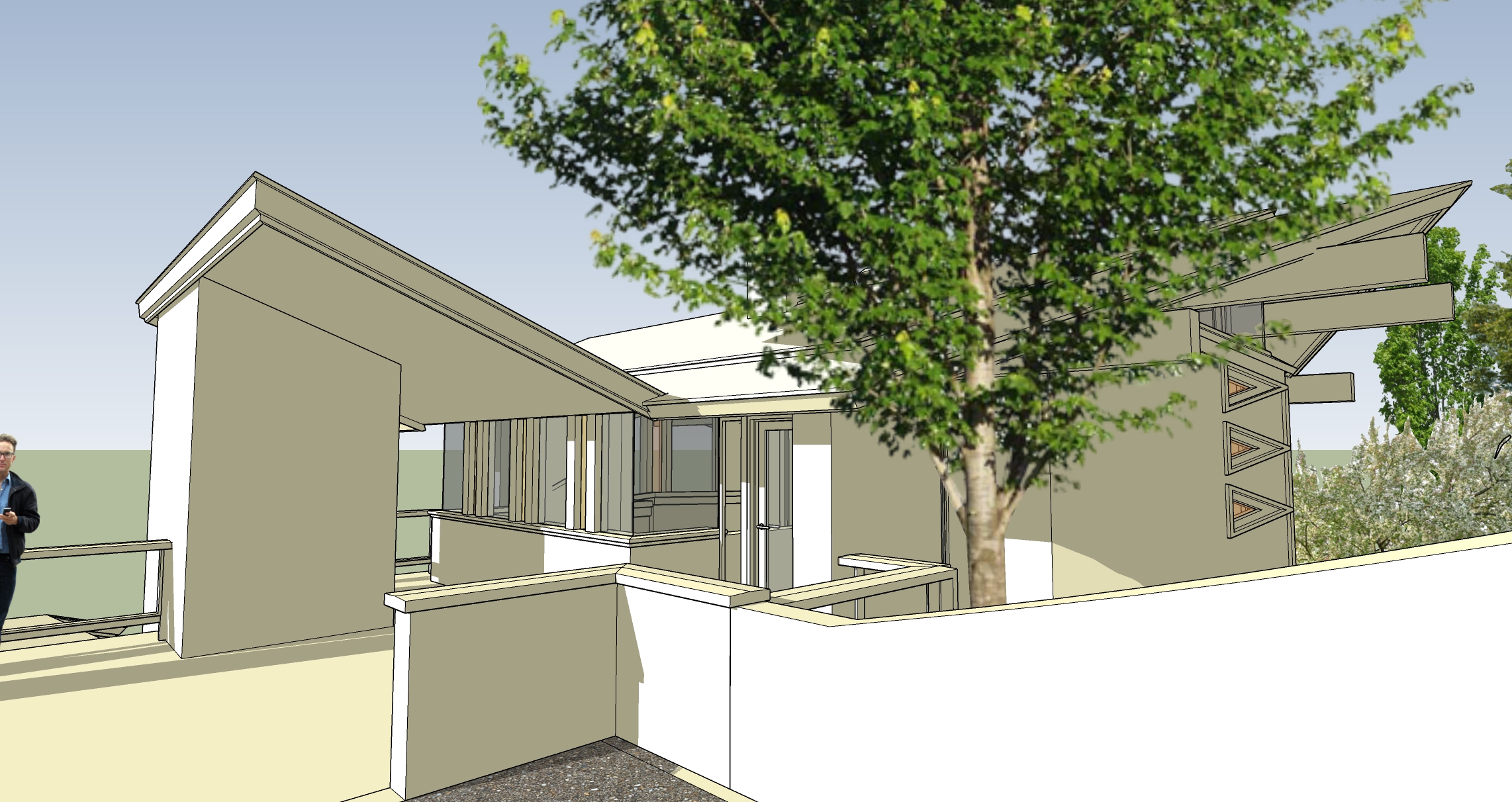
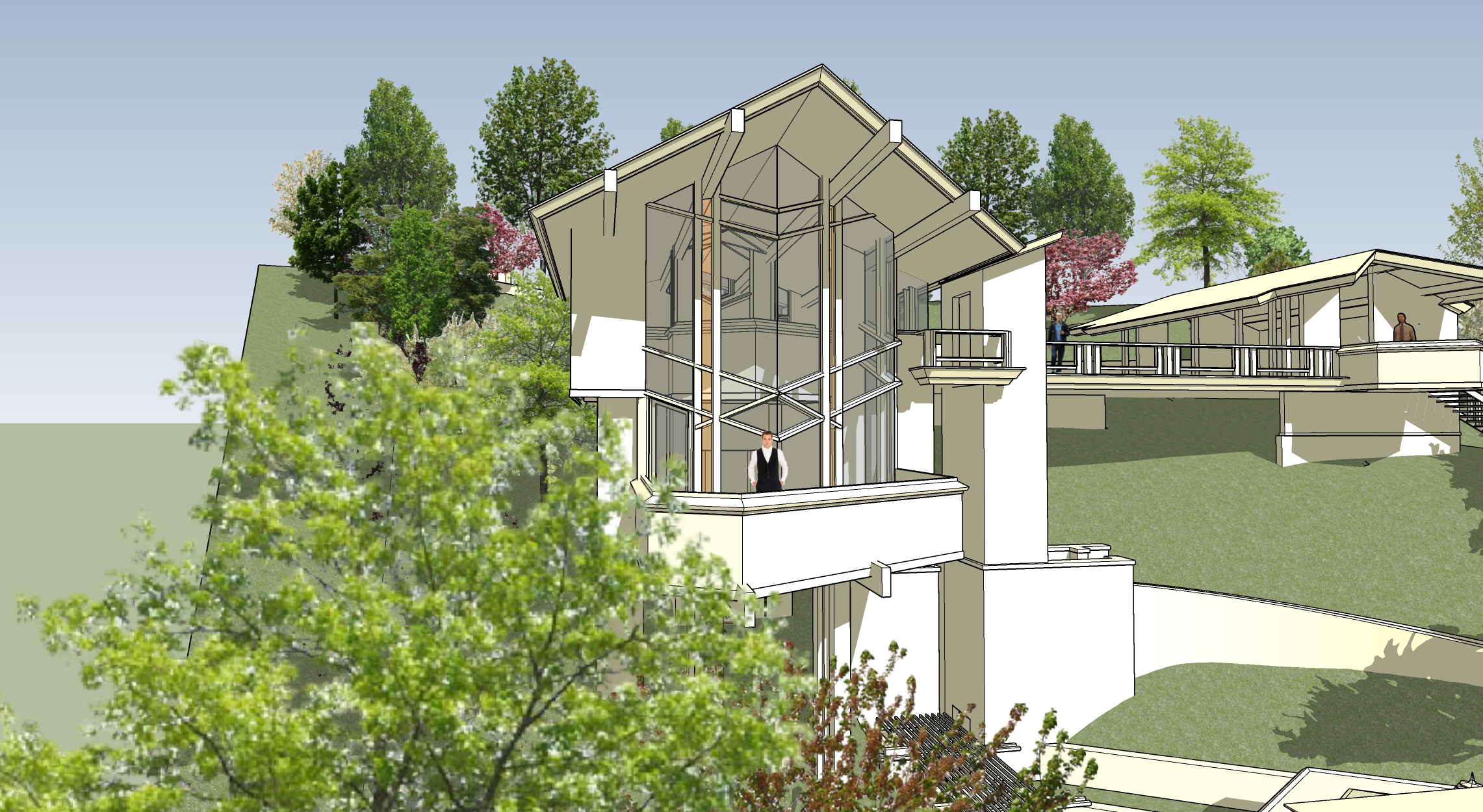
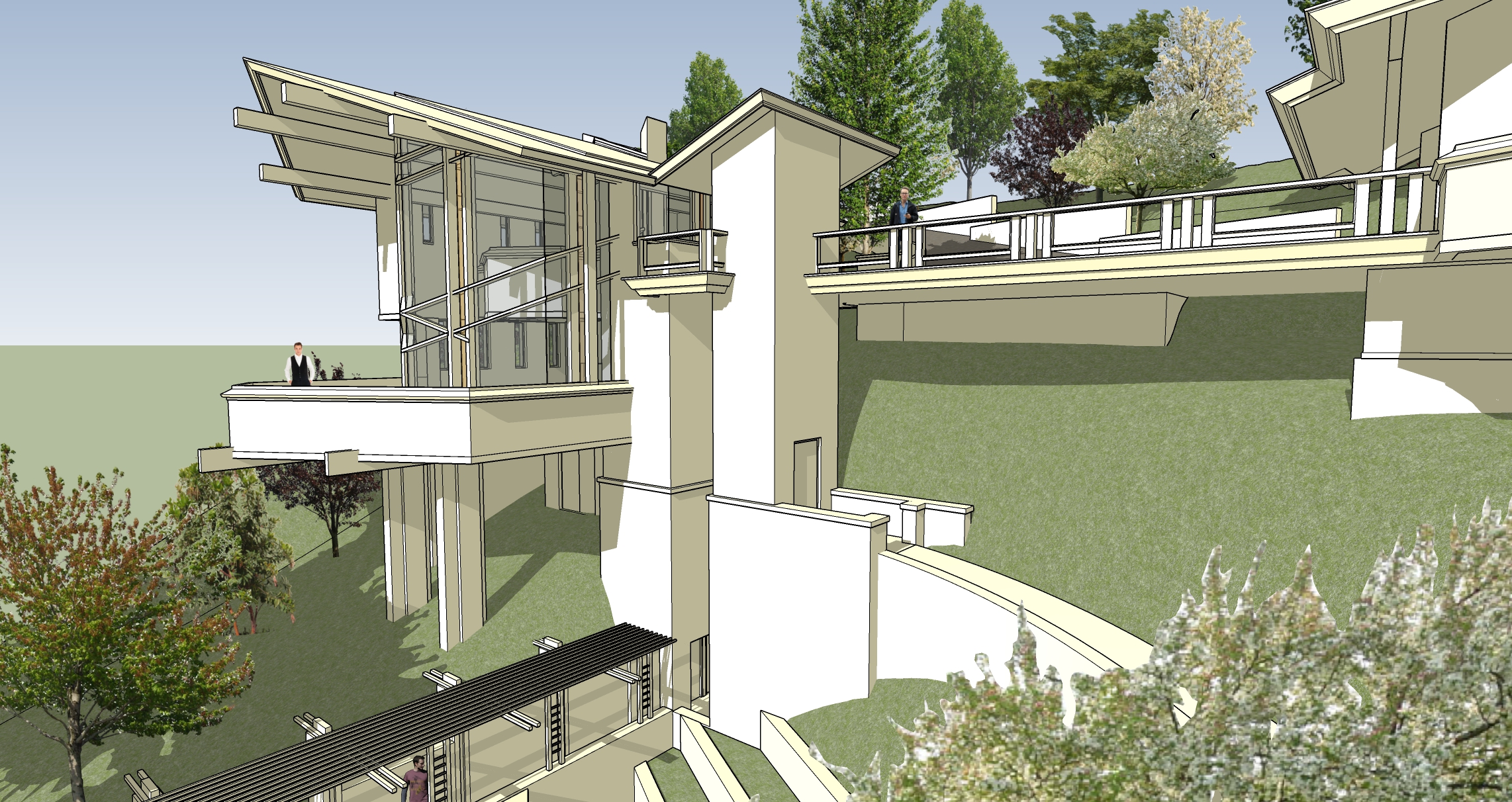

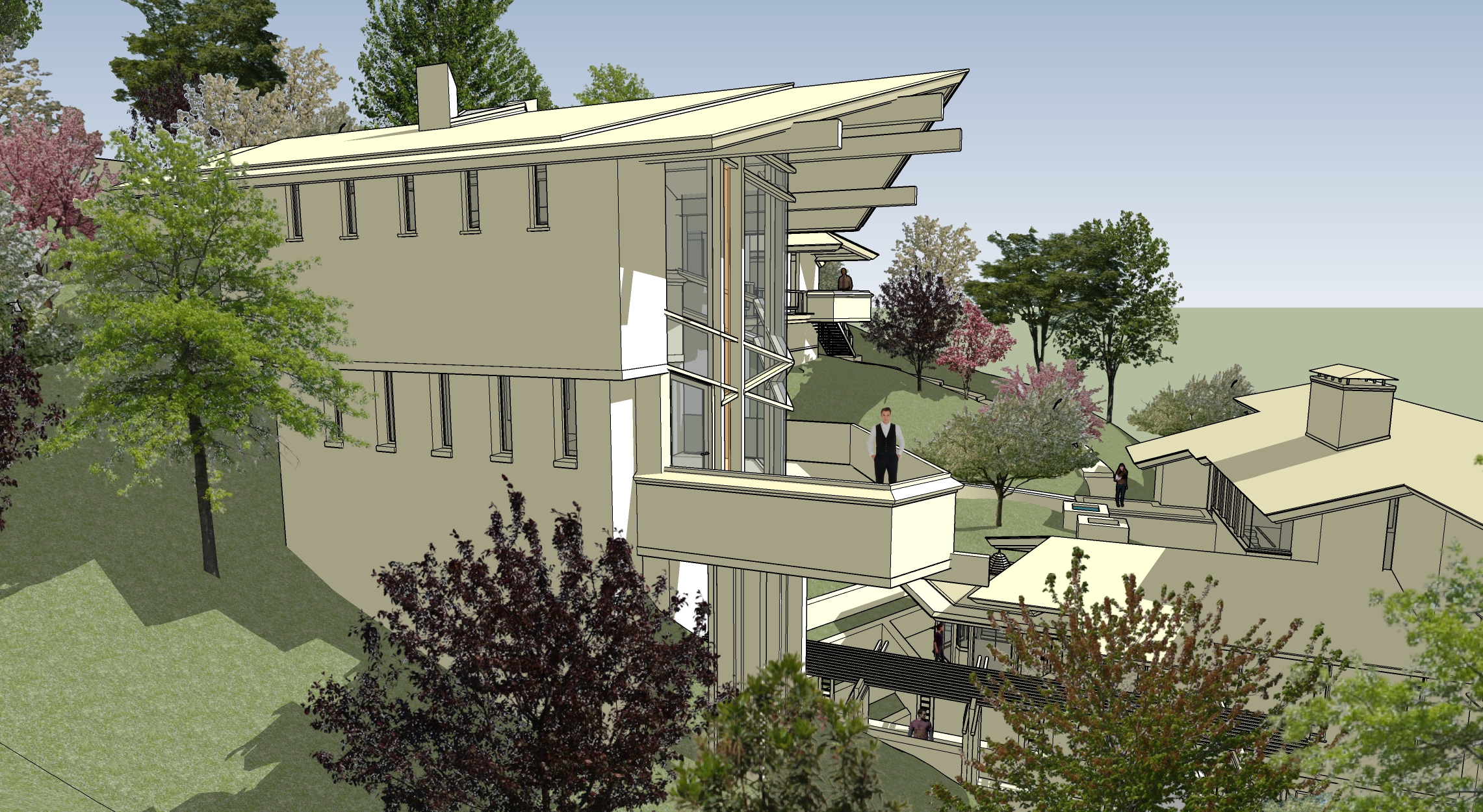
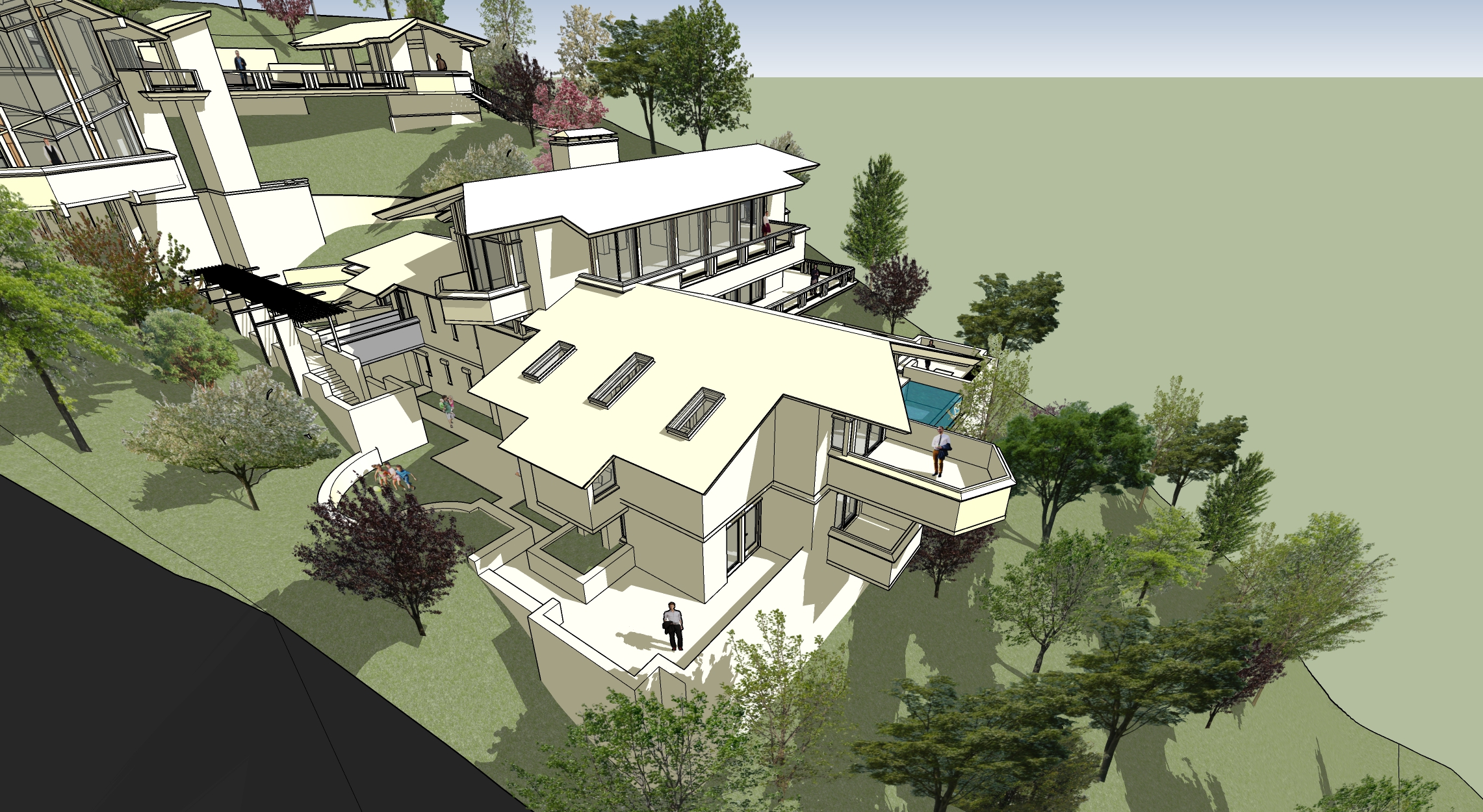
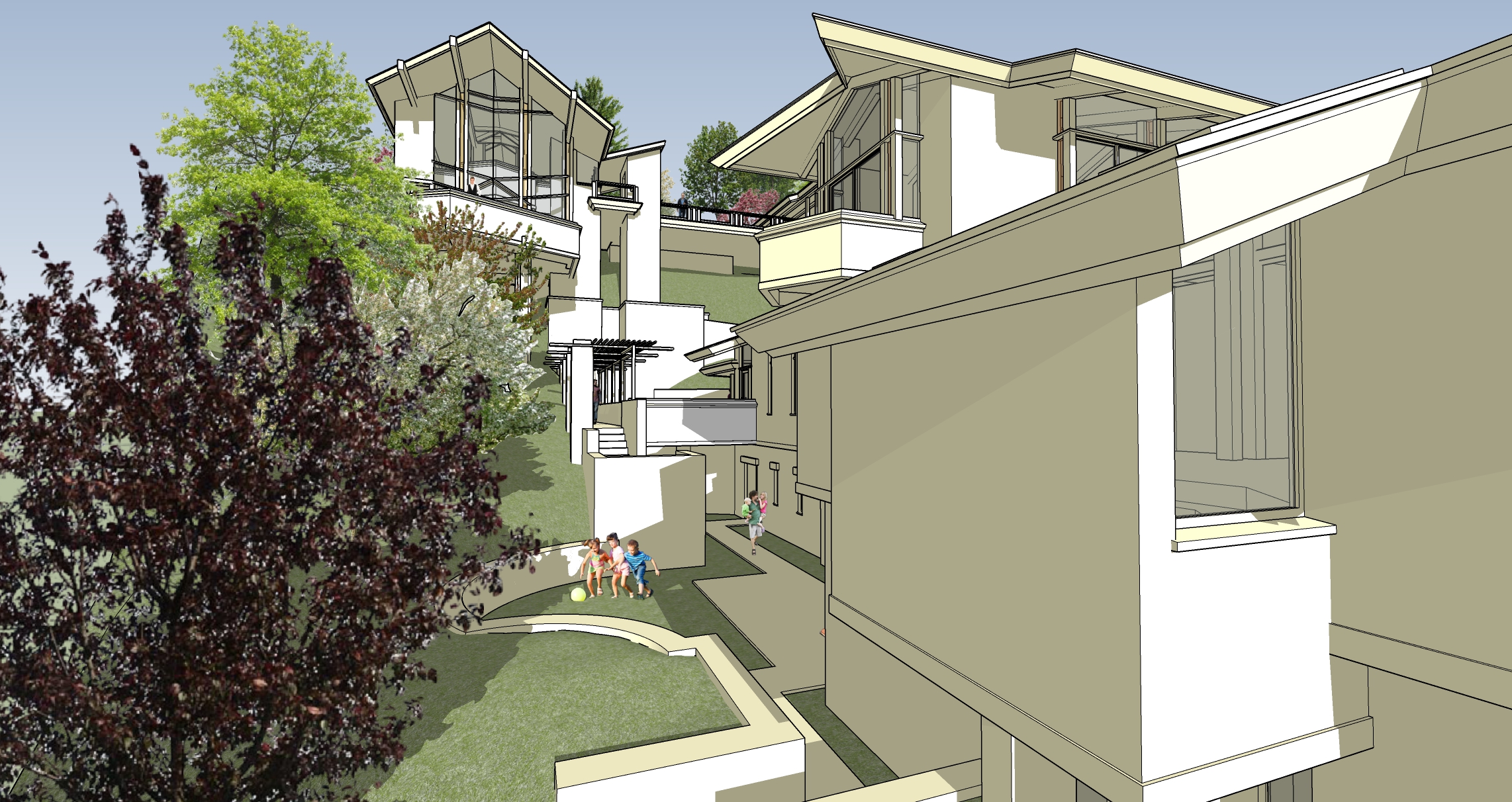
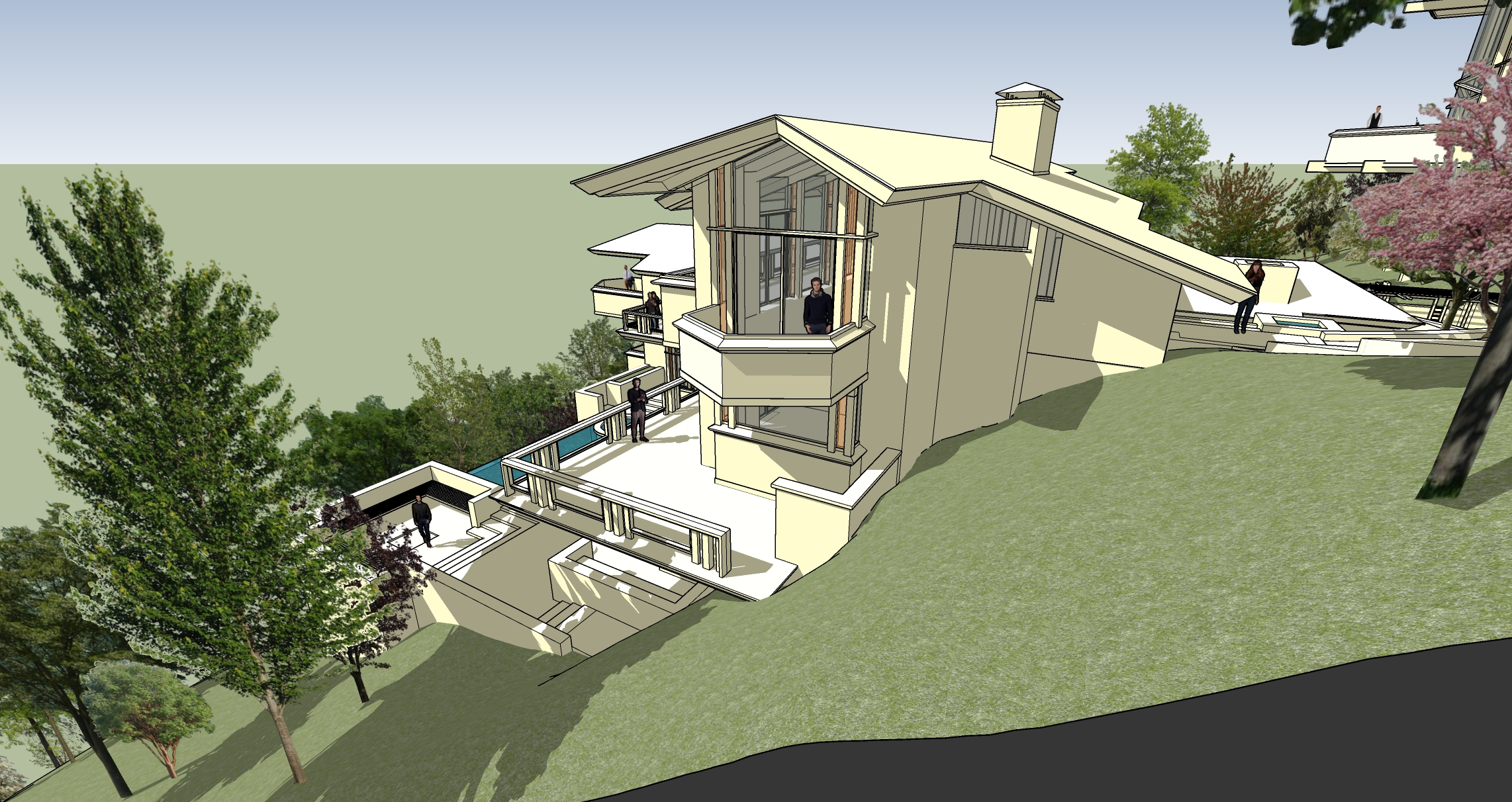
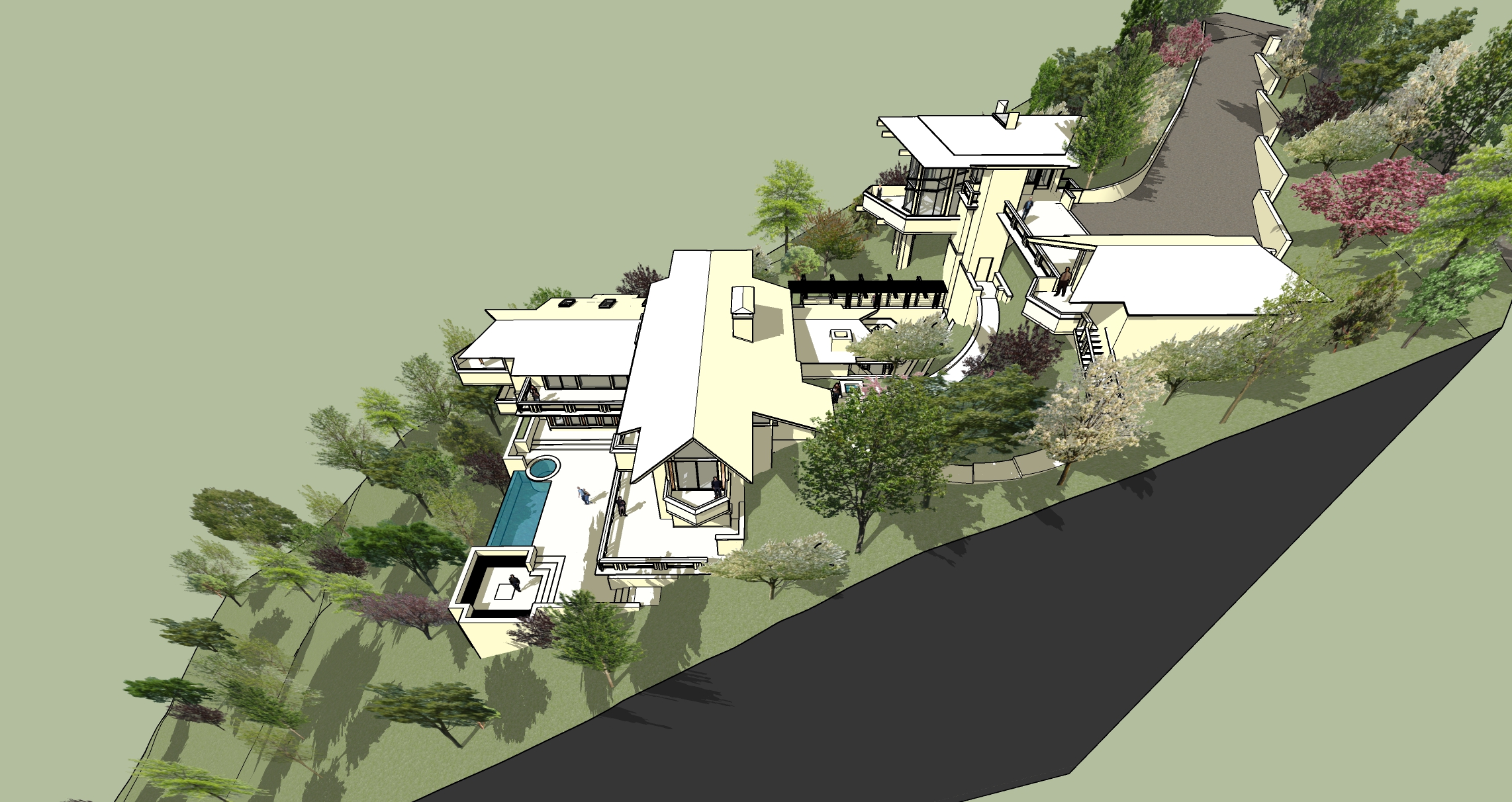
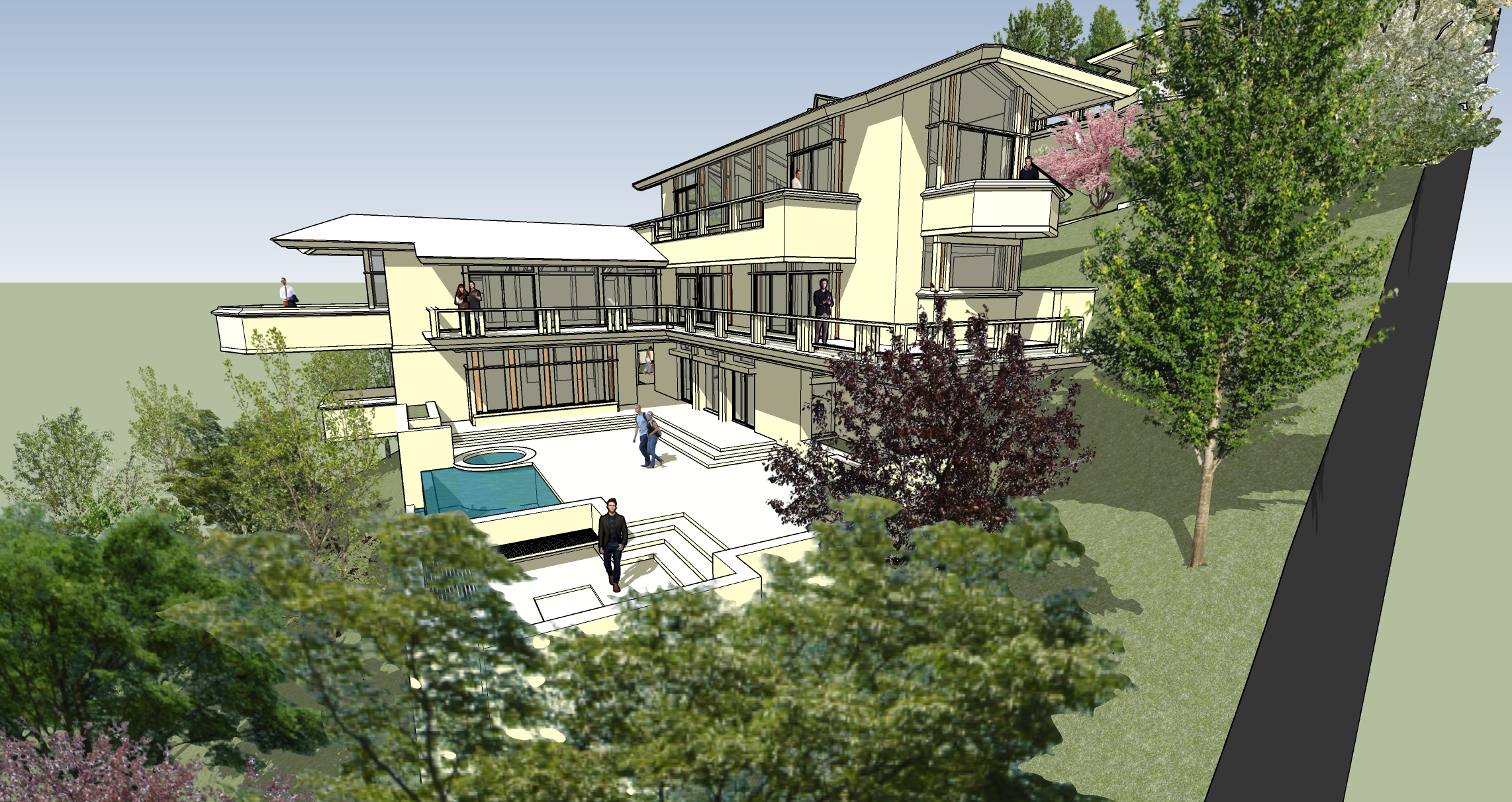
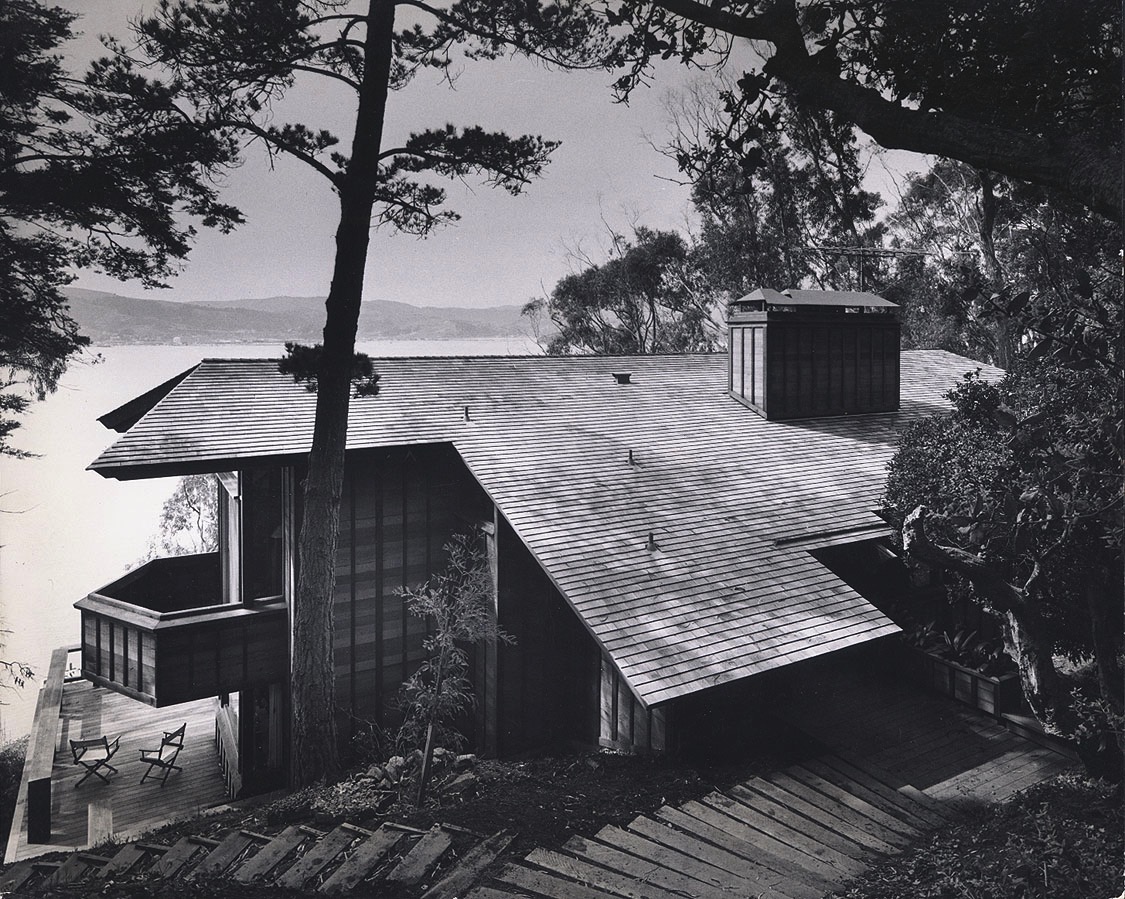
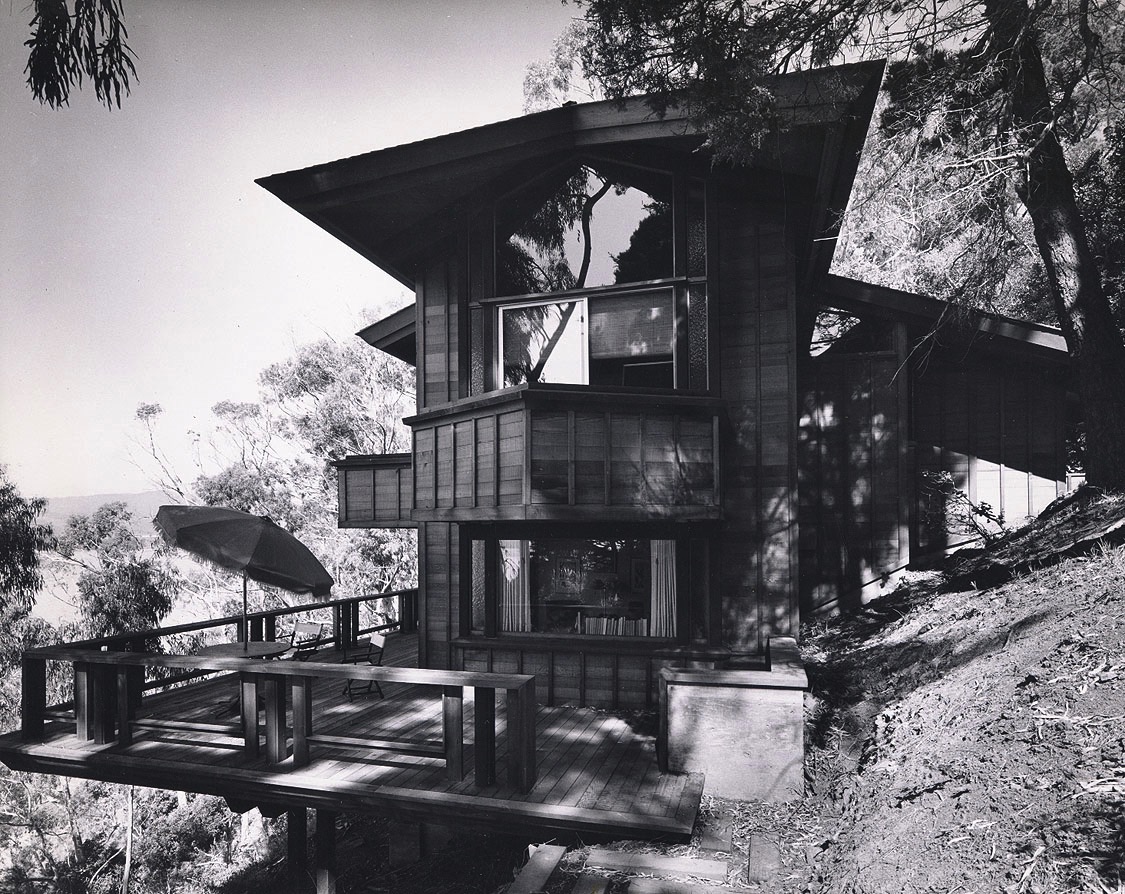
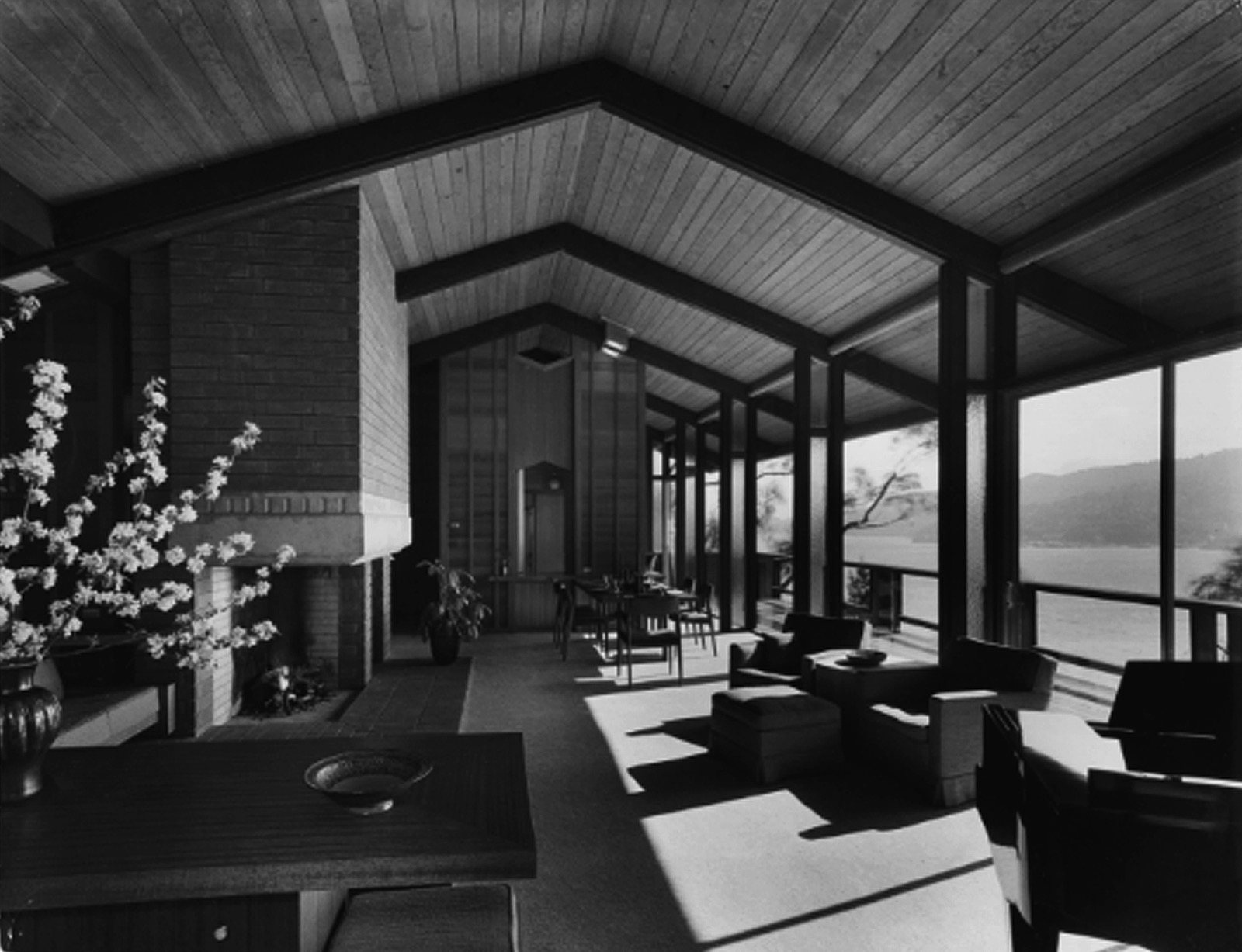
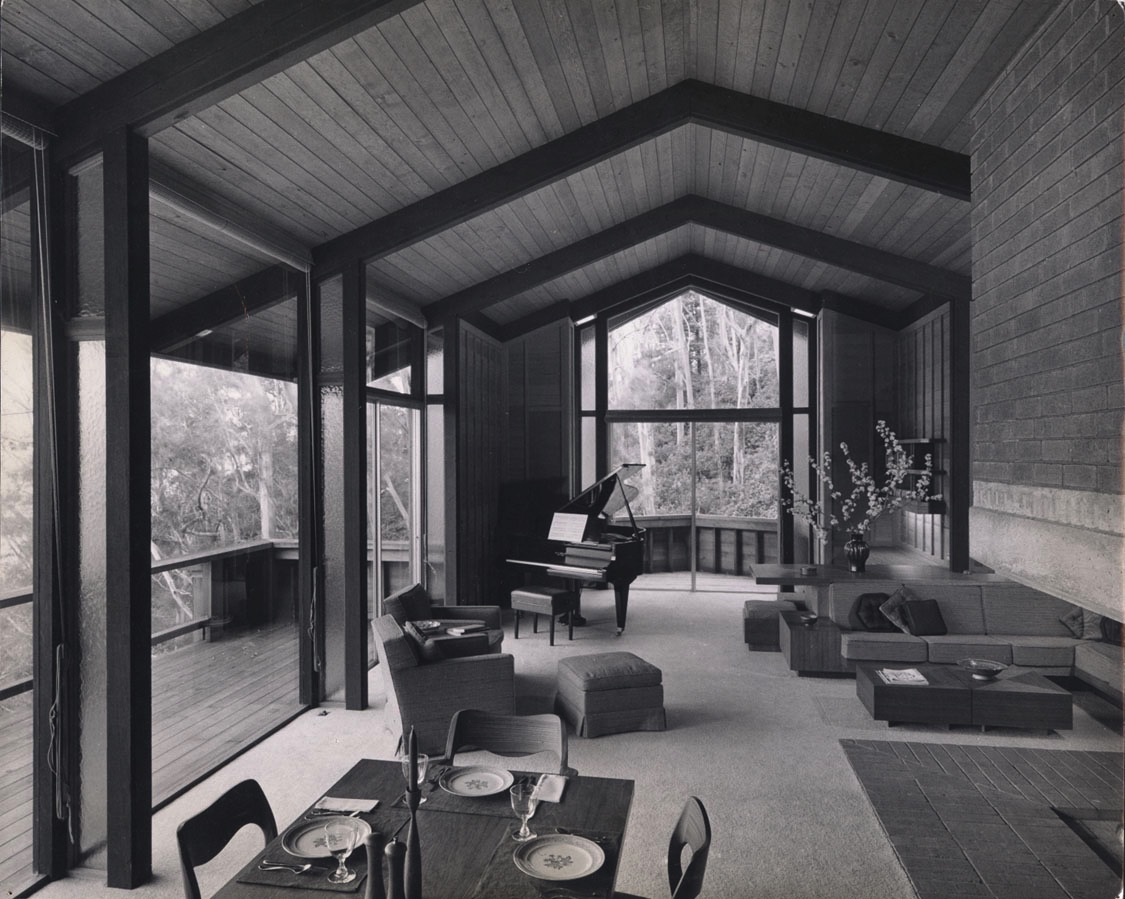
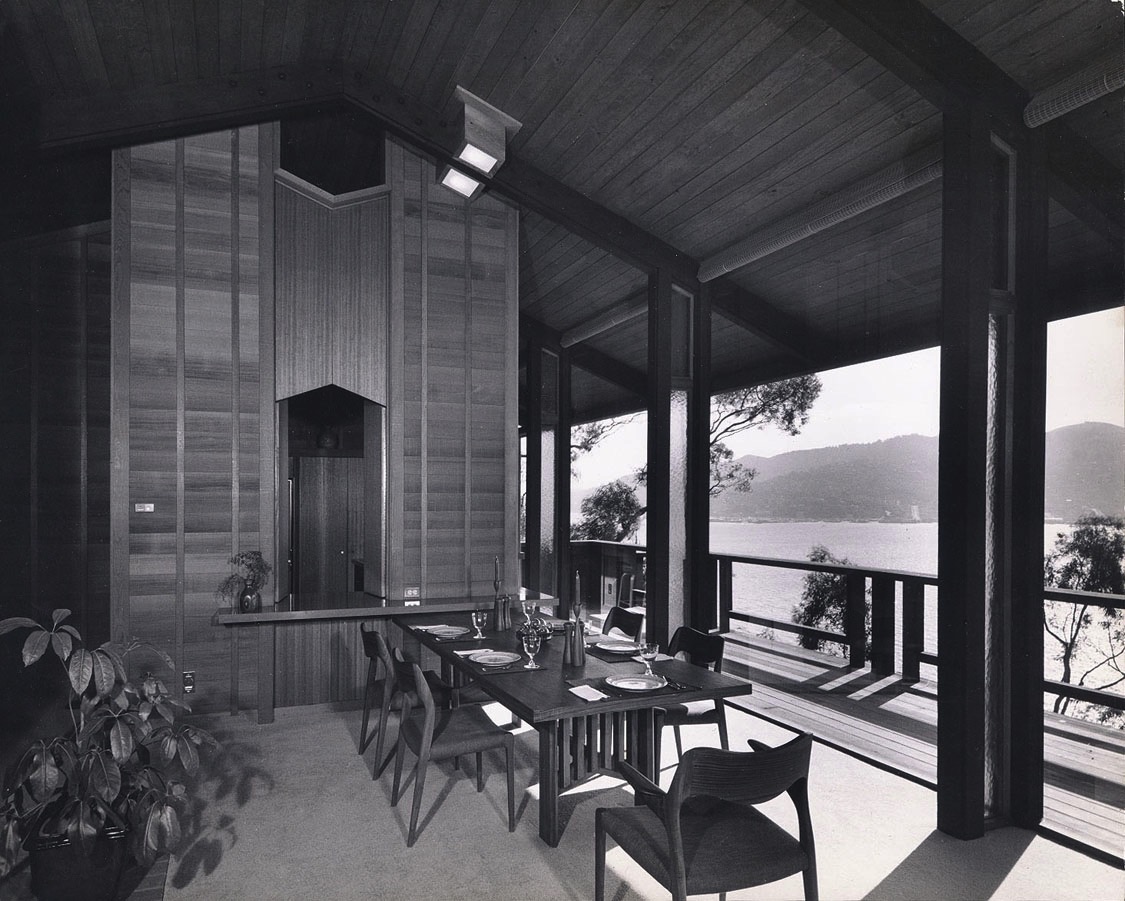
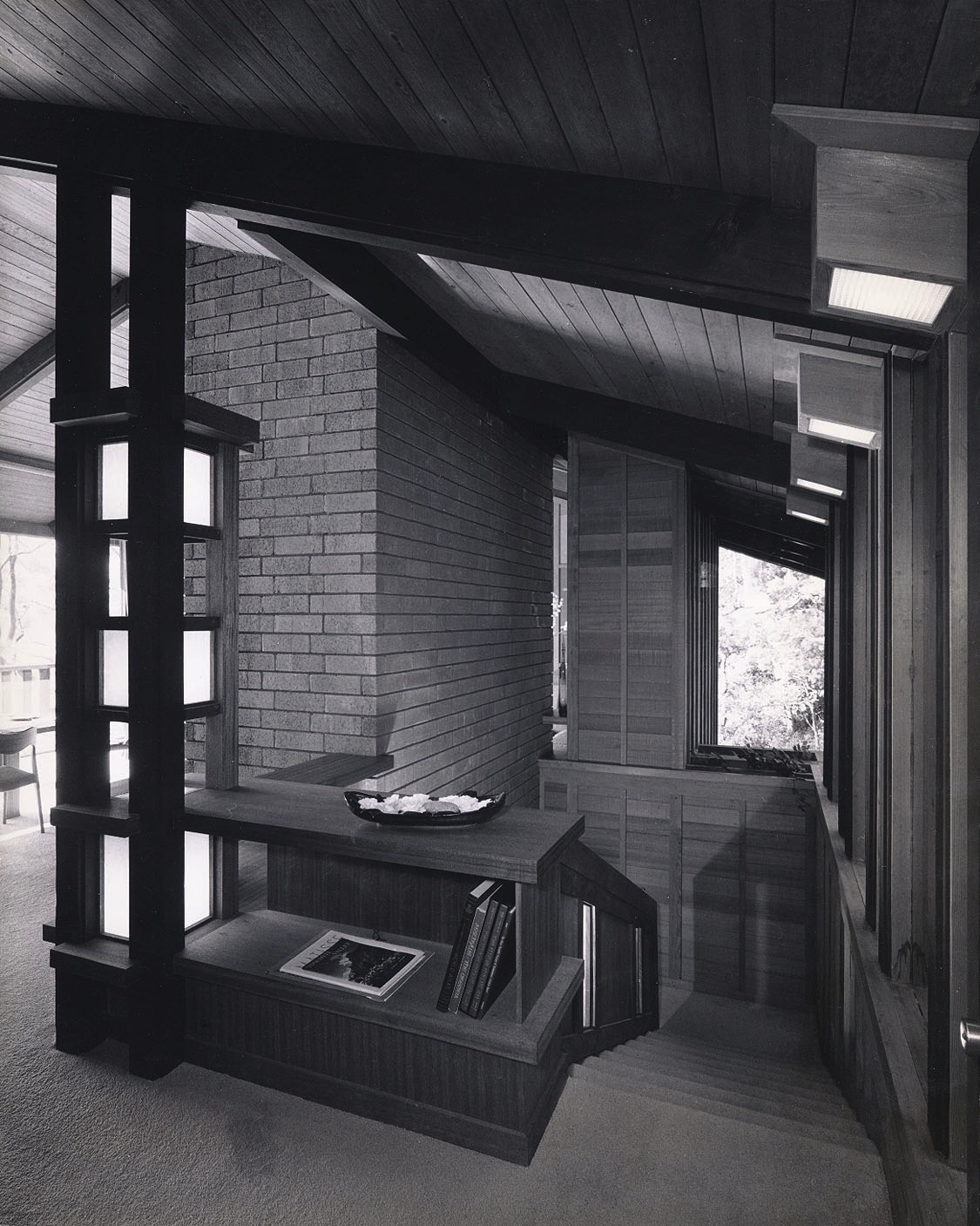
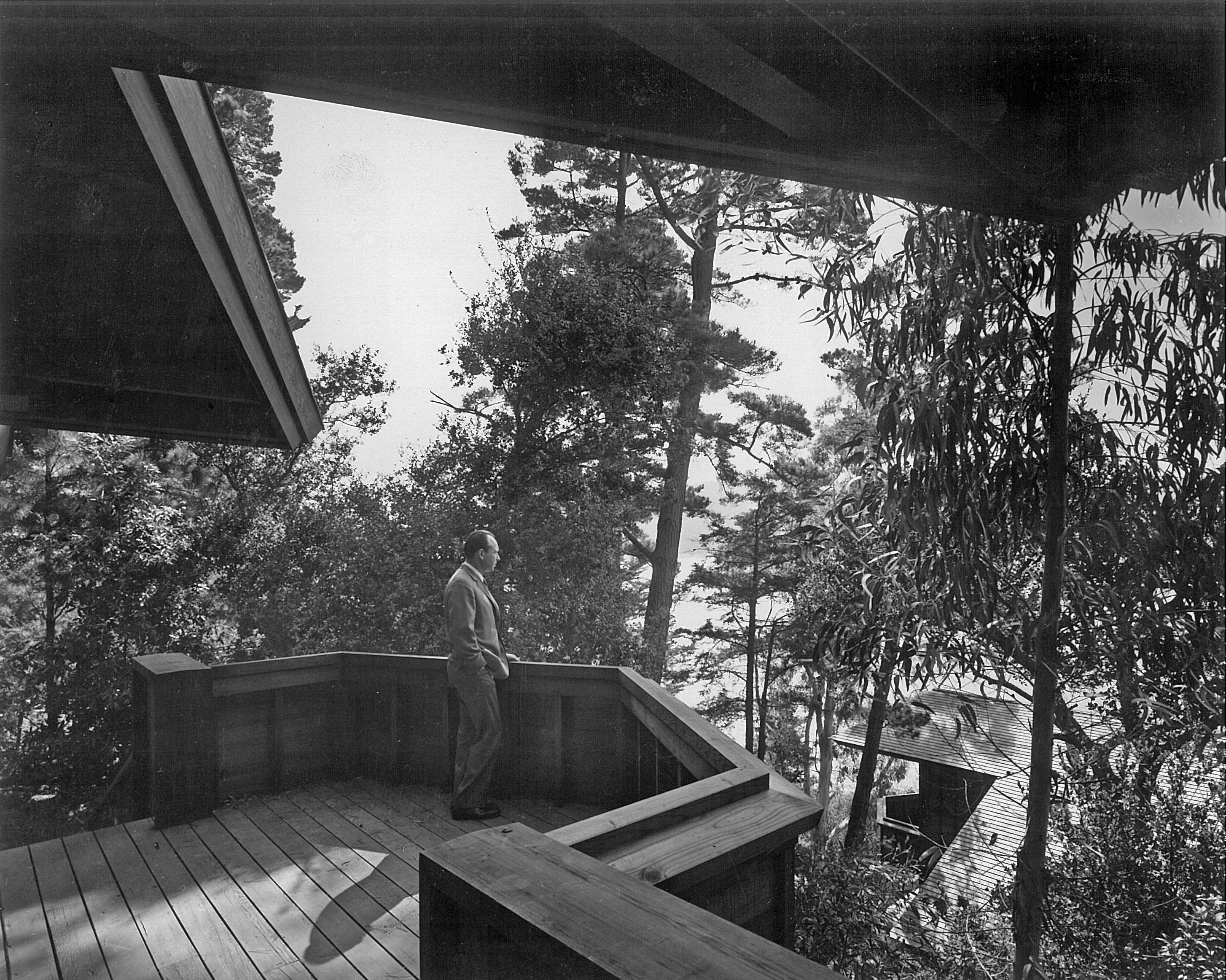
UPDATE: In 2016, the property was sold to a couple who desired the lot and its views, but had no appreciation for the Aaron Green-designed home. They commissioned a new building as a replacement, then proceeded to apply for Planning Review and Building Permit with the intent on demolishing Green's design. The City of Belvedere's Historic Landmarks Commission, in all their infinite wisdom, declared that the original home was not historically significant, nor was Aaron Green a significant, or "Master," architect. Scores of scholars, academics, architects, and concerned public disagreed. A battle was waged with The City of Belvedere Planning and appealed to the City Council, but lost at all levels--it's fate had long been decided. In 2018, the world lost another singular work of Aaron Green's architecture.
